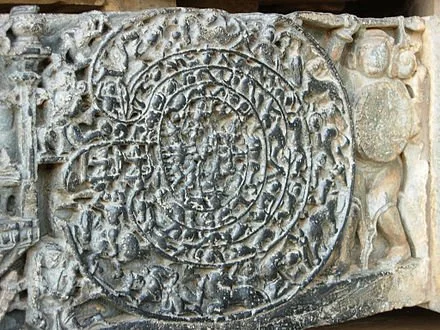Carving showing the warrior Abhimanyu enteringa a labyrinth in the Hoysaleswara temple, Halebidu, India
Adapted from Robert Whitcomb’s “Digital Diary,’ in GoLocal24.com
On the west-bound closing on Route 195’s Washington Bridge: Once more fear and chaos triumph.
Meanwhile, I know that highway engineering can be difficult, especially in densely populated areas, but surely the Rhode Island Department of Transportation can make it easier to navigate the new rotary on the east side of the always-being-rebuilt Henderson Bridge project between Providence’s East Side and that speed-trap capital called East Providence. The current signage sends many people in circles or facing the peril of a head-on collision, especially at night and during rush hours.
Rotaries (aka “roundabouts”), by smoothing and calming traffic, can reduce accidents, and they cut pollution from the idling of gasoline-fueled vehicles and can eliminate the need for expensive traffic lights. But the signage must be very clear – especially at night.
Better study the bridge project carefully before entering it — if you can get to it through the mess/anarchy caused by the Washington Bridge’s partial closing.
And now there’s the inevitable flap over a proposed rotary in Portsmouth, R.I. Drivers, like most people, fear change.
National Register of Historic Places plaque on the first traffic circle in the United States, at the intersection of River and Pleasant streets in Yarmouth, Mass.
Meanwhile, my friend Lisette Prince, who lives in Newport, reminded me that planting ground cover instead of grass on median strips and otherwise along the roads reduces pollution caused by gasoline-powered lawn mowers, virtually eliminates erosion and can stay green without watering for much longer than grass.
Soothing Big Periwinkle ground cover













